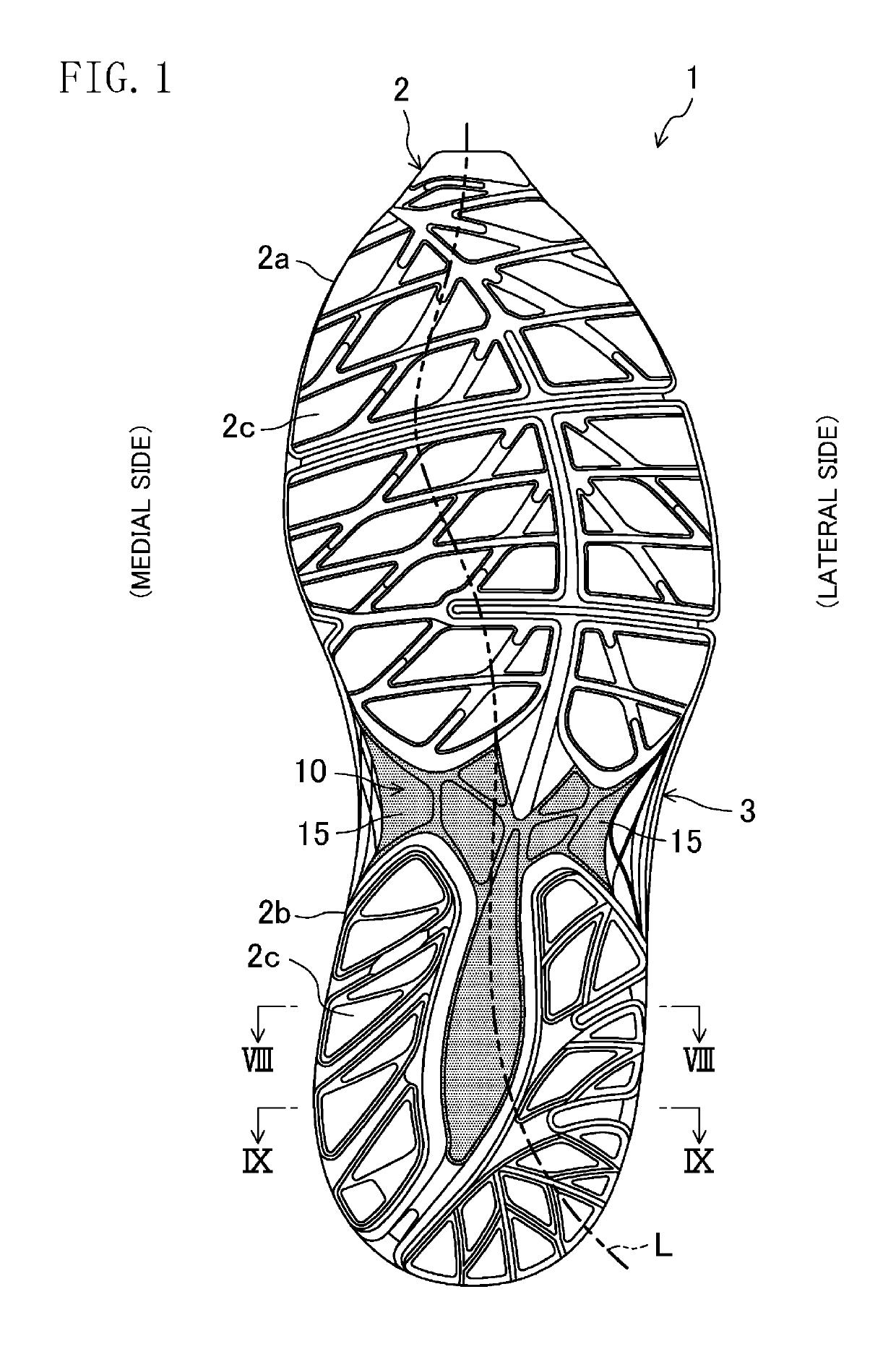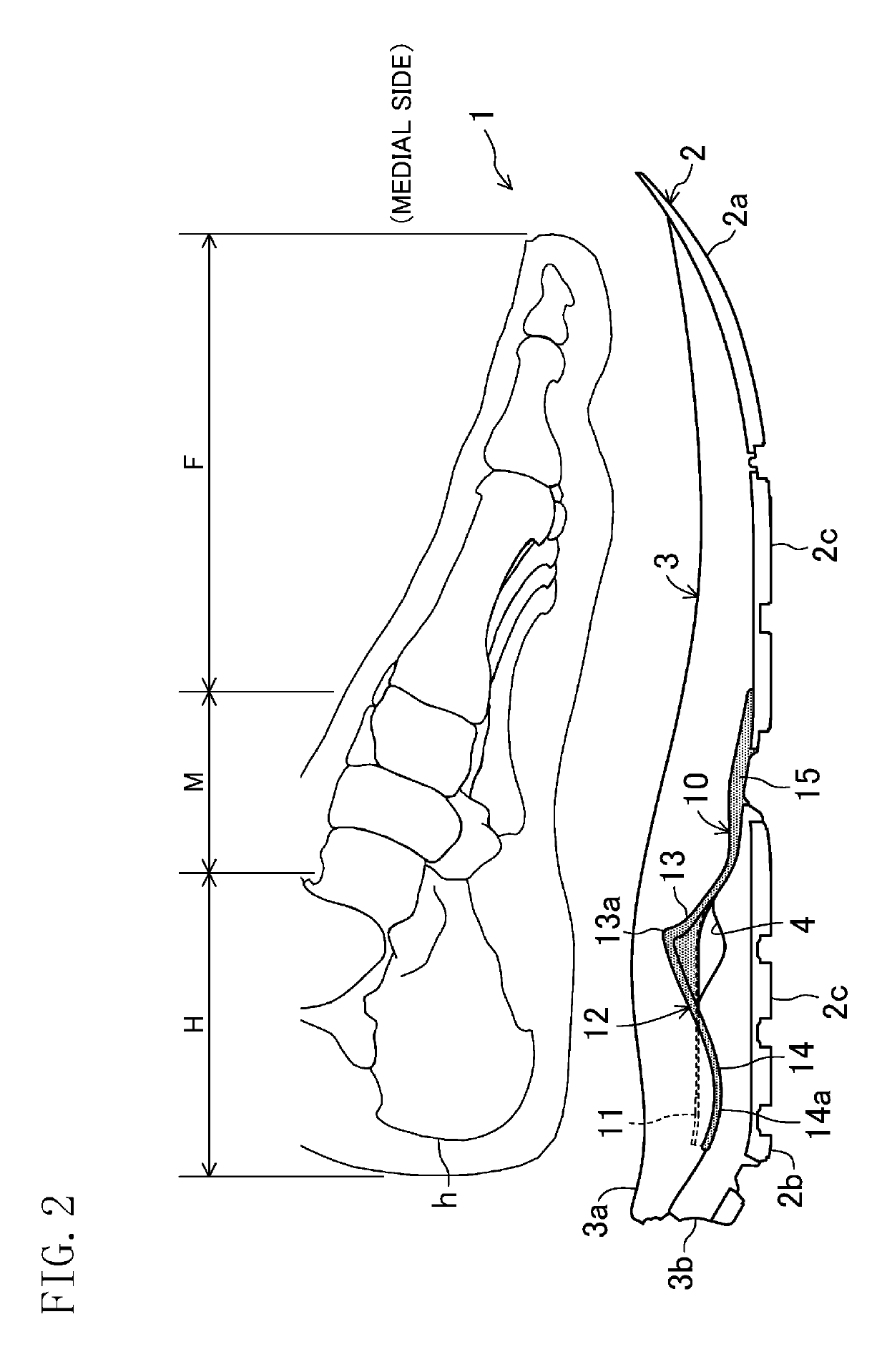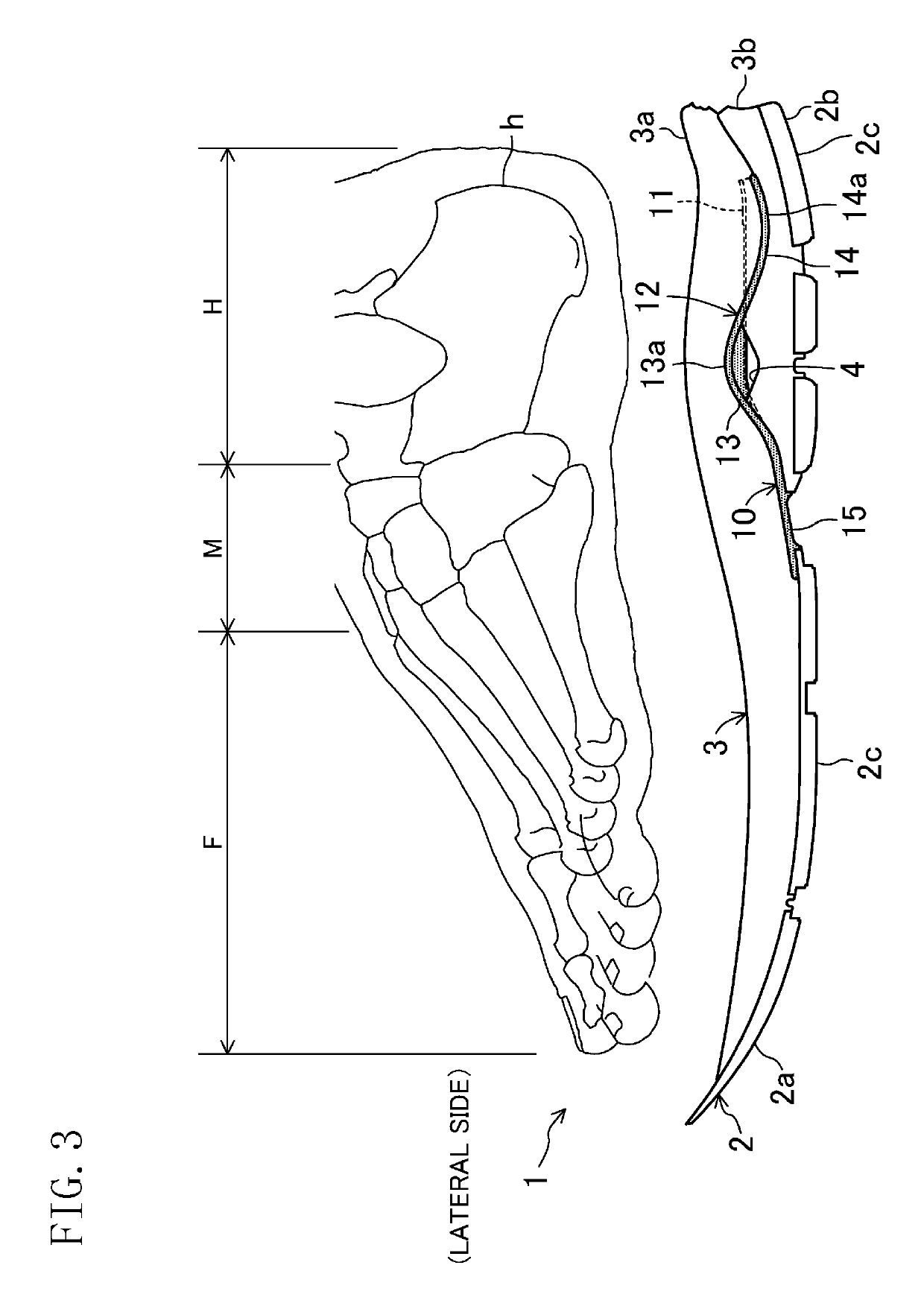Sole structure for shoes and shoe with the sole structure
a technology of sole structure and shoe, which is applied in the field of sole structure for shoes and shoes with sole structure, can solve the problems of insufficient cushioning of shock in the sole structure, insufficient cushioning of the midsole, and the shoe touching the ground at the rear of the heel on the lateral side cannot be sufficiently cushioned, so as to achieve the effect of supporting the entire heel region
- Summary
- Abstract
- Description
- Claims
- Application Information
AI Technical Summary
Benefits of technology
Problems solved by technology
Method used
Image
Examples
first embodiment
[0035]FIGS. 1-3 illustrate an overall sole structure 1 for shoes according to a first embodiment of the present disclosure. A pair of shoes including an upper structure (not shown) on this sole structure 1 may be used, for example, as athletic shoes for running and various sports, sneakers for daily use, or rehabilitation shoes. FIGS. 1-3 show the sole structure 1 for a left shoe only. A sole structure 1 for a right shoe is symmetrical to the sole structure 1 for the left shoe. In the following description including the embodiments and variations, only the sole structure 1 for the left shoe will be described and, the description of the sole structure 1 for the right shoe will be omitted. In the following description, the expressions “above,”“upward,”“on a / the top of,”“below,”“downward,” and “under” represent the vertical positional relationship between respective parts of the sole structure 1, and “front” and “rear” represent the longitudinal positional relationship in the sole stru...
second embodiment
[0055]FIG. 10 illustrates a sole structure 1 according to a second embodiment of the present disclosure. In this embodiment, the shape of the corrugated side 12 on the medial side is different from that in the first embodiment. In the other respects, the configurations of the sole structure 1 in this embodiment are the same or similar to those in the first embodiment. In the following description, the same reference characters as those shown in FIGS. 1-9 are used to represent equivalent elements, and the explanation thereof will be omitted.
[0056]As shown in FIG. 10, in this embodiment, a plurality of (e.g., two in the figure) ridges 13 and 13 are provided so as to be arranged longitudinally continuously with each other on the medial side of the heel region H. A recessed intermediate portion 16, which curves like the groove 14, is smoothly continuous between the ridges 13 and 13. The groove 14 is provided continuously with the rear of the ridge 13 located at the end. The recessed int...
PUM
| Property | Measurement | Unit |
|---|---|---|
| elastic | aaaaa | aaaaa |
| thickness | aaaaa | aaaaa |
| width | aaaaa | aaaaa |
Abstract
Description
Claims
Application Information
 Login to View More
Login to View More - R&D
- Intellectual Property
- Life Sciences
- Materials
- Tech Scout
- Unparalleled Data Quality
- Higher Quality Content
- 60% Fewer Hallucinations
Browse by: Latest US Patents, China's latest patents, Technical Efficacy Thesaurus, Application Domain, Technology Topic, Popular Technical Reports.
© 2025 PatSnap. All rights reserved.Legal|Privacy policy|Modern Slavery Act Transparency Statement|Sitemap|About US| Contact US: help@patsnap.com



